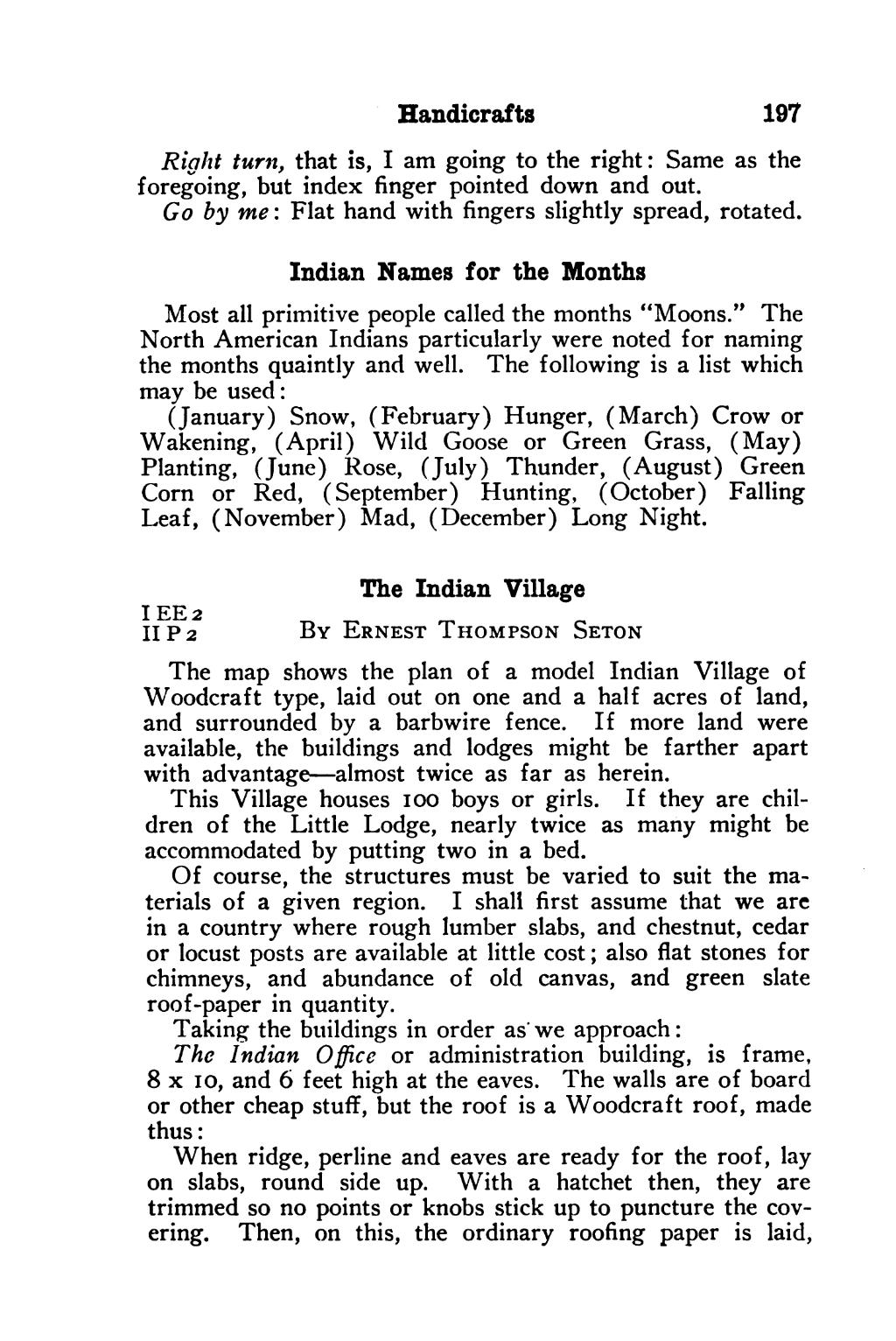- Handicrafts 197 Right turn, that is, I am going to the right: Same as the foregoing, but index finger pointed down and out. Go by me: Flat hand with fingers slightly spread, rotated. Indian Names for the Months Most all primitive people called the months “Moons.” The North American Indians particularly were noted for naming the months quaintly and well. The following is a list which may be used: (January) Snow, (February) Hunger, (March) Crow or Wakening, (April) Wild Goose or Green Grass, (May) Planting, (June) Rose, (July) Thunder, (August) Green Corn or Red, (September) Hunting, (October) Falling Leaf, (November) Mad, (December) Long Night. The Indian Village IEE2 II P2 By Ernest THOMPSON SETON The map shows the plan of a model Indian Village of Woodcraft type, laid out on one and a half acres of land, and surrounded by a barbwire fence. If more land were available, the buildings and lodges might be farther apart with advantage—almost twice as far as herein. This Village houses 100 boys or girls. If they are chil- dren of the Little Lodge, nearly twice as many might be accommodated by putting two in a bed. Of course, the structures must be varied to suit the ma- terials of a given region. I shali first assume that we are in a country where rough lumber slabs, and chestnut, cedar or locust posts are available at little cost; also flat stones for chimneys, and abundance of old canvas, and green slate roof-paper in quantity. Taking the buildings in order as we approach: The Indian Office or administration building, is frame, 8 x 10, and 6 feet high at the eaves. The walls are of board or other cheap stuff, but the roof is a Woodcraft roof, made thus: When ridge, perline and eaves are ready for the roof, lay on slabs, round side up. With a hatchet then, they are trimmed so no points or knobs stick up to puncture the cov- ering. Then, on this, the ordinary roofing paper is laid,
Stránka:roll 1931.djvu/213
Z thewoodcraft.org
Tato stránka nebyla zkontrolována
